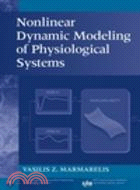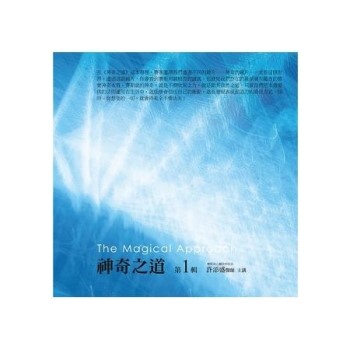| FindBook |
有 1 項符合
NONLINEAR DYNAMIC MODELING OF PHYSIOLOGICAL SYSTEMS的圖書 |
 |
NONLINEAR DYNAMIC MODELING OF PHYSIOLOGICAL SYSTEMS 作者:MARMARELIS 出版社:JOHN WILEY & SONS,INC. 出版日期:2004-01-01 |
| 圖書館借閱 |
| 國家圖書館 | 全國圖書書目資訊網 | 國立公共資訊圖書館 | 電子書服務平台 | MetaCat 跨館整合查詢 |
| 臺北市立圖書館 | 新北市立圖書館 | 基隆市公共圖書館 | 桃園市立圖書館 | 新竹縣公共圖書館 |
| 苗栗縣立圖書館 | 臺中市立圖書館 | 彰化縣公共圖書館 | 南投縣文化局 | 雲林縣公共圖書館 |
| 嘉義縣圖書館 | 臺南市立圖書館 | 高雄市立圖書館 | 屏東縣公共圖書館 | 宜蘭縣公共圖書館 |
| 花蓮縣文化局 | 臺東縣文化處 |
|
|
- 圖書簡介
The study of nonlinearities in physiology has been hindered by the lack of effective ways to obtain nonlinear dynamic models from stimulus-response data in a practical context. A considerable body of knowledge has accumulated over the last thirty years in this area of research. This book summarizes that progress, and details the most recent methodologies that offer practical solutions to this daunting problem. Implementation and application are discussed, and examples are provided using both synthetic and actual experimental data.
This essential study of nonlinearities in physiology apprises researchers and students of the latest findings and techniques in the field. - 作者簡介
Vasilis Z. Marmarelis, PhD, received his diploma in electrical and mechanical engineering from the National Technical University of Athens and his MS in information science and PhD in engineering science (bio-information systems) from the California Institute of Technology. He is currently a professor in the faculty of the Biomedical and Electrical Engineering Departments at USC, where he served as chairman of Biomedical Engineering from 1990 to 1996. He is also Codirector of the Biomedical Simulations Resource (BMSR), a research center dedicated to modeling and simulation of physiological systems and funded by the National Institutes of Health through multimillion-dollar grants since 1985.
- 名人/編輯推薦
"...a perfect research tool, as reference book, and even as a textbook. I highly recommend it to everyone interested in nonlinear dynamics." (Journal of Intelligent & Fuzzy Systems, Vol. 16, No. 2, 2005)
"...a well-written methodology book...a useful addition to [researchers, engineers and graduate students']...personal libraries." (E-STREAMS, September 2005) - 目次
Prologue.
1 Introduction.
1.1 Purpose of this Book.
1.2 Advocated Approach.
1.3 The Problem of System Modeling in Physiology.
1.4 Types of Nonlinear Models of Physiological Systems.
2 Nonparametric Modeling.
2.1 Volterra Models.
2.2 Wiener Models.
2.3 Efficient Volterra Kernel Estimation.
2.4 Analysis of Estimation Errors.
3 Parametric Modeling.
3.1 Basic Parametric Model Forms and Estimation Procedures.
3.2 Volterra Kernels of Nonlinear Differential Equations.
3.3 Discrete-Time Volterra Kernels of NARMAX Models.
3.4 From Volterra Kernel Measurements to Parametric Models.
3.5 Equivalence Between Continuous and Discrete Parametric Models.
4 Modular and Connectionist Modeling.
4.1 Modular Form of Nonparametric Models.
4.2 Connectionist Models.
4.3 The Laguerre-Volterra Network.
4.4 The VWM Model.
5 A Practitioner’s Guide.
5.1 Practical Considerations and Experimental Requirements.
5.2 Preliminary Tests and Data Preparation.
5.3 Model Specification and Estimation.
5.4 Model Validation and Interpretation.
5.5 Outline of Step-by-Step Procedure.
6 Selected Applications.
6.1 Neurosensory Systems.
6.2 Cardiovascular System.
6.3 Renal System.
6.4 Metabolic-Endocrine System.
7 Modeling of Multiinput/Multioutput Systems.
7.1 The Two-Input Case.
7.2 Applications of Two-Input Modeling to Physiological Systems.
7.3 The Multiinput Case.
7.4 Spatiotemporal and Spectrotemporal Modeling.
8 Modeling of Neuronal Systems.
8.1 A General Model of Membrane and Synaptic Dynamics.
8.2 Functional Integration in the Single Neuron.
8.3 Neuronal Systems with Point-Process Inputs.
8.4 Modeling of Neuronal Ensembles.
9 Modeling of Nonstationary Systems.
9.1 Quasistationary and Recursive Tracking Methods.
9.2 Kernel Expansion Method.
9.3 Network-Based Methods.
9.4 Applications to Nonstationary Physiological Systems.
10 Modeling of Closed-Loop Systems.
10.1 Autoregressive Form of Closed-Loop Model.
10.2 Network Model Form of Closed-Loop Systems.
Appendix I: Function Expansions.
Appendix II: Gaussian White Noise.
Appendix III: Construction of the Wiener Series.
Appendix IV: Stationarity, Ergodicity, and Autocorrelation Functions of Random Processes.
References.
Index.
|











